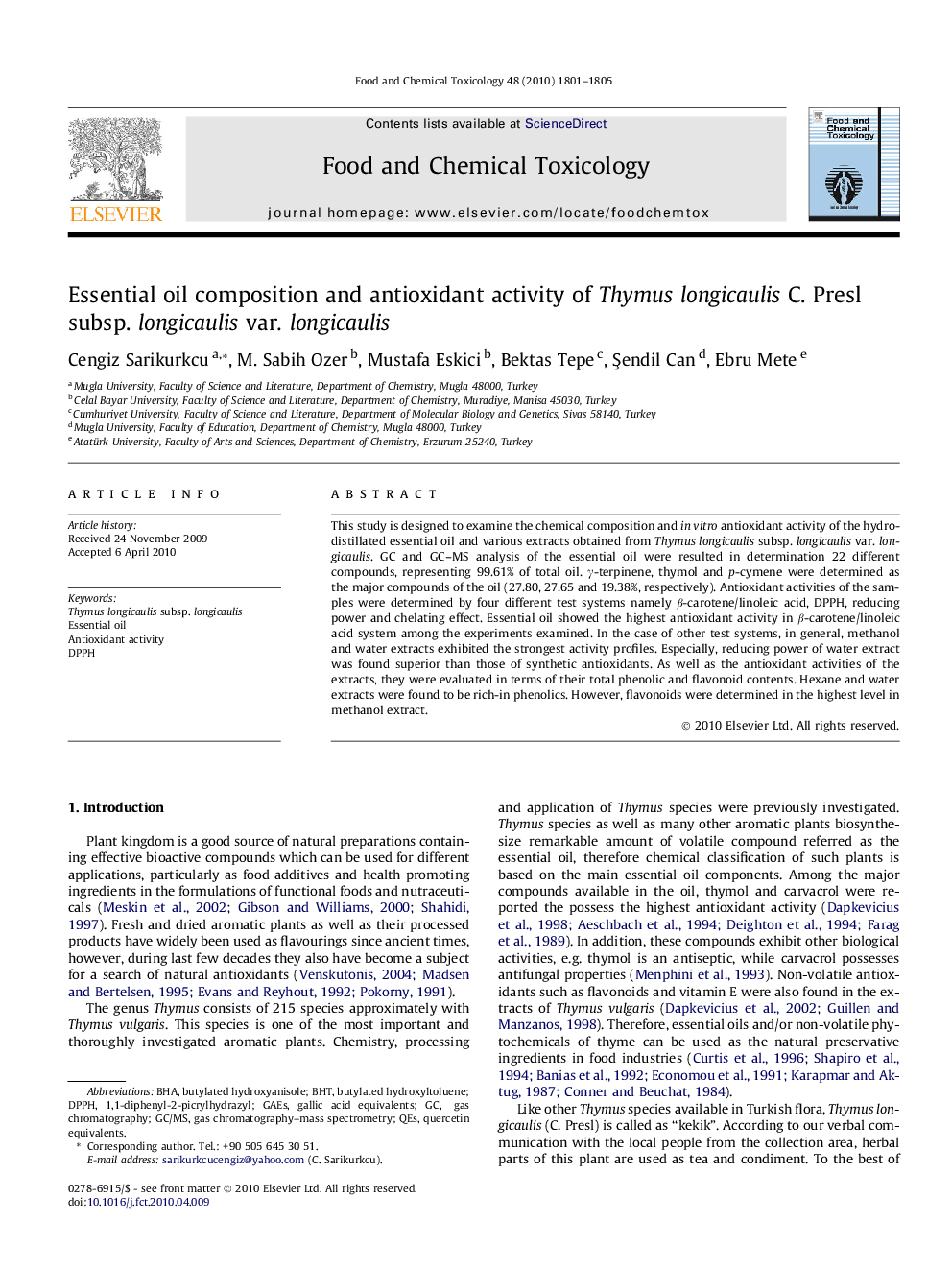| Article ID | Journal | Published Year | Pages | File Type |
|---|---|---|---|---|
| 2585729 | Food and Chemical Toxicology | 2010 | 5 Pages |
This study is designed to examine the chemical composition and in vitro antioxidant activity of the hydrodistillated essential oil and various extracts obtained from Thymus longicaulis subsp. longicaulis var. longicaulis. GC and GC–MS analysis of the essential oil were resulted in determination 22 different compounds, representing 99.61% of total oil. γ-terpinene, thymol and p-cymene were determined as the major compounds of the oil (27.80, 27.65 and 19.38%, respectively). Antioxidant activities of the samples were determined by four different test systems namely β-carotene/linoleic acid, DPPH, reducing power and chelating effect. Essential oil showed the highest antioxidant activity in β-carotene/linoleic acid system among the experiments examined. In the case of other test systems, in general, methanol and water extracts exhibited the strongest activity profiles. Especially, reducing power of water extract was found superior than those of synthetic antioxidants. As well as the antioxidant activities of the extracts, they were evaluated in terms of their total phenolic and flavonoid contents. Hexane and water extracts were found to be rich-in phenolics. However, flavonoids were determined in the highest level in methanol extract.
